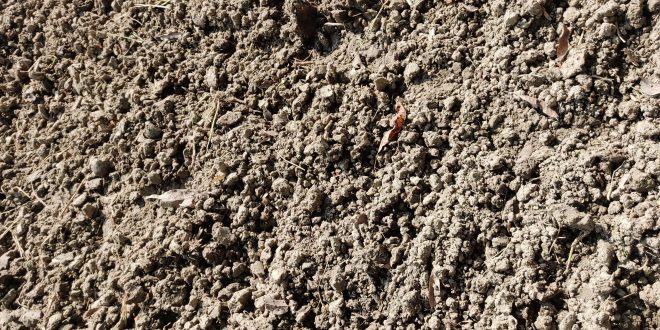Soil fertility means the ability of a soil to sustain plant growth by providing essential plant nutrients and favorable chemical, physical and biological characteristics as a habitat for plant growth.
Soil Fertility
Soil fertility is defined as “the quality that enables a soil to provide the proper compounds, in the proper amounts, and in the proper balance, for the growth of specified plants when temperature and other factors are favorable”.
- Fertile soil will contain all the major nutrients for basic plant nutrition (e.g., Nitrogen, Phosphorus, and Potassium), as well as other nutrients needed in smaller quantities (e.g., Calcium, Magnesium, Sulfur, Iron, etc.). Usually, fertile soil will also have some organic matter that improves soil structure, soil moisture retention, and also nutrient retention, and a pH between 6 and 7.
- Soil fertility is a manageable soil property and its management is of utmost importance for optimizing crop nutrition to achieve sustainable crop production.
Factors Governing Soil Fertility
Some factors are involved in soil fertility. These are as follows:
- Parent material: The fertility of soil depends on the chemical composition of the parent material from which it is derived.
- Topography: Soils on the upper slope are less fertile than the soils on a lower slope because of high leaching and erosion on the upper slope.
- Climate: In tropical climates decomposition of organic matter is faster than in temperate climates. Thus soils of tropical regions are less fertile when compared to the temperate regions.
- Depth of Soil Profile: Deep soils are more fertile than shallow soils and the roots are spread well enough in deep soils than the shallow soils.
- Physical Condition of Soil: The soil texture and soil structure influence soil fertility.
- Artificial Factors: Water logging, cropping system, toxic chemicals and pesticides in the soil, etc.
Importance of Soil Fertility
Soils with high fertility-
- Mobilize soil nutrients from the reserves.
- Transform fertilizer nutrients into easily available forms.
- Store water-soluble nutrients in easily available forms, thus preventing leaching.
- Offer the plants a balanced nutrient supply due to its self-regulating system.
- Store and supply sufficient water.
- Maintain good soil aeration for the oxygen requirements of roots.
- Do not ‘fix’ nutrients, i.e. convert them into available form.
- Improve crop use efficiency of nutrients and resources such as water and light.
Soil Productivity
A term comes with soil fertility, that is soil productivity, what is soil productivity?
- Soil Productivity is defined as the capability of soil for producing a specified plant or sequence of plants under a specified system of management.
- The main factors governing productivity are soil fertility, climate, pests, disease, genetic potentials of the crop and man’s management (tillage, planting date, irrigation schedule, etc.). Thus, soil productivity is an expression of all the factors, soil and non-soil, that influence crop yields.
- Soil Productivity is basically an economic concept and not a soil property. Three things are involved: (1) inputs (a specified management system) (2) outputs (yield of particular crops), and (3) soil type.
Are Soil Fertility and Soil Productivity Same?
A question arises, are all the highly fertile soils productive?
The answer is, ‘No’. Because-
For soil to be productive it must be fertile. But It does not follow, however, that fertile soil is productive. For example, many fertile soils exist in arid regions, but they are not productive due to a lack of irrigation or favorable temperature.
So, all highly fertile soils are not productive, but all productive soils are highly fertile.
Difference Between Soil Fertility and Soil Productivity
Soil fertility and soil productivity are not the same, there are some basic differences:
| Soil Fertility | Soil Productivity |
| 1. It is an index of available nutrients to plants. | 1. It is used to indicate crop yields. |
| 2. Influenced by the physical, chemical, and biological factors of the soil. | 2. Depends upon fertility and location. |
| 3. It is the function of available nutrients in the soil. | 3. It is the function of soil fertility, management, and climate. |
| 4. All fertile soils are not productive. | 4. All productive soils are fertile. |
| 5. It is an inherent property of the soil. | 5. It is not the inherent property of the soil. |
References & Other Links
This article is based on the class lecture by Md. Bayazid Hossain (Lecturer, Department of Soil, Water & Environment, University of Dhaka).
Some information has been added by the author. Any mistake, error, and other related things found in this article are only the author is to blame.
Revised by
- Saifun Nahar Smriti on 5 December, 2020.
- Khaleda Akter Shompa on 18 July, 2021.
 Plantlet The Blogging Platform of Department of Botany, University of Dhaka
Plantlet The Blogging Platform of Department of Botany, University of Dhaka





